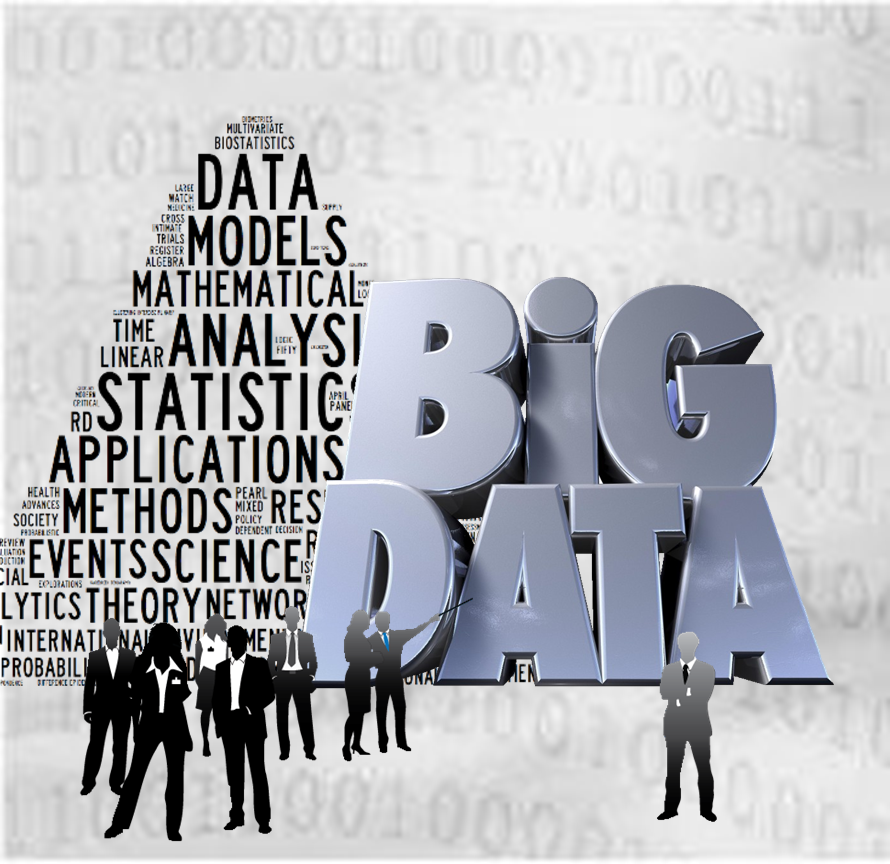Big data may seem like an old topic; however, the ways in which companies deal with big data continues to evolve. Tech writer Joe Devanesan (@thecrystalcrown) reports, “With the unprecedented speed of digital transformations driven by data, companies are eager to capitalize and capture a slice of emerging big data trends and applicable insights. The push is so strong right now that a survey found that nine out of 10 senior corporate executives are gearing up to invest in big data and artificial intelligence (AI).”[1] Collecting data has been around since humans started keeping records. Deloitte analysts, however, insist the Digital Age and the maturity of cognitive technologies are changing how and why data is collected. They explain, “For decades, companies have collected, organized, and analyzed data with one goal in mind: helping humans make decisions based on statistical fact rather than hunch and emotion. To that end, we’ve typically organized data in tables and rows, with precise labeling. AI-enabled machines, by contrast, can assess multiple factors simultaneously and objectively. Machine learning (ML) models are a good example: They can extract low levels of statistical significance across massive volumes of structured and unstructured data. They work around the clock and can make clever decisions in real time. To compete in a world of AI-based decision-making, tech leaders are reengineering the ways they capture, store, and process data.”[2] While humans can suffer from information overload, the Deloitte analysts call cognitive technologies “the beast that never sleeps” and they insist the beast must be constantly fed with new data.
The Latest Big Data Trends
Kamalika Some (@KamalikaSome), a Freelance Content Strategist in the areas of Data Science and Digital Transformation, writes, “Data has become the world’s most valuable asset. Advancements in the accessibility and capacity of tools for collecting, transmitting, storing, analyzing and acting upon data is making it easier to gather information and turn it into knowledge.”[3] Let’s take a look at some of those advancements and big data trends.
Data-As-A-Service (DaaS). The staff at AiThority notes, “DaaS introduced users to a new level of data accessibility with the help of Cloud technology. Consumers can gain access, regardless of their geographical location or the device on which they are operating. Certain applications in the market have access to the data stores that provide services to their clients. Data helps companies have a better insight into customer behavior and fulfilling client needs effectively. DaaS provides agility in work, as the structure is modifiable according to company needs. Data quality improves, as well as it is very cost-effective due to the ability to outsource the service.”[4] Some adds, “DaaS will drive the future of global economies. The ability to tap into omnipresent data resources securely without investing hugely in building a data community will be critical to enterprise success.”
Clean and Actionable Data. One of the reasons organizations use DaaS is because the data they get is ready to be analyzed. The AiThority staff notes, “Clean data results in better insights, reduced processing time. … Organized and clean data, gives actionable data; from which you can derive any sort of knowledge or insight. The size of the resources is beyond comprehension, that is why companies are resorting to outsourcing and DaaS solutions.”
Data Democratization. With the rise of the digital enterprise, personnel throughout an organization need access to data, even if they are not particularly data literate. Some notes, “Citizen data scientists and self-service Business Intelligence (BI) will propel the seamless movement of big data across data warehouses over entire value chains. Self-service BI will let businesses integrate into a data-driven framework through ERPs, financial programming, CRMs, and marketing automation.” Data democratization is generally empowered by Natural Language Processing (NLP). Some notes, “Advancements in Natural Language Process systems will enable big data stakeholders to engage users over customized data conversations.”
Hybrid Clouds. Hybrid cloud architectures leverage both private and public clouds. The AiThority staff explains, “Both private and public clouds have their own benefits. Hybrid Cloud introduces a cloud computing system, which moves between the two (on-premises and third-party) clouds for flexibility, adaptive memory processing (AMP), and deployment solutions within a company. Many times, companies cannot rely only on a private cloud because of limited capacity for some temporal computational needs.” That’s when public clouds become important. Deloitte analysts explain, “Major and emerging public cloud vendors are offering cloud data warehouses as a service. These vendors aggregate data from disparate sources across an enterprise and make it available to users for real-time processing and mining. This combination of public cloud ease-of-use, the ability to scale up or down as needed, and advanced data processing and analysis tools is fueling considerable growth in the cloud data warehouse market.” Donald Farmer (@DonaldTreeHive), a Principal at TreeHive Strategy, adds, “A big data platform in the cloud likely has not only more processing capacity, but also better tools and a more experienced staff supporting it than your organization can afford on its own.”[5]
Edge computing. Devanesan notes that the proliferation of Internet of Things (IoT) devices will create an enormous amount of data. As a result, he writes, “The growth of edge computing is therefore closely associated with the Internet of Things. The proliferation of enterprise IoT initiatives and consumer IoT offerings will drive demand for edge computing solutions.” The AiThority staff adds, “Edge computing lessens the time required to establish a connection between server and customer. Devices would respond more quickly and data streaming would be more facilitated with it. Edge computing processes the data faster in less bandwidth usage, in short making the system more effective.” Deloitte analysts conclude, “Edge computing can be particularly useful when deploying ML algorithms, which require uninterrupted, real-time access to large quantities of recent data. It does not replace enterprise or cloud-based data centers but helps distribute processing work — including analysis and decisioning — more evenly across a network.”
Real-time analysis. Edge computing is also contributing to another fast-growing trend — real-time or near-real-time data analysis. Some explains, “Live big data analytics from data pipelines generate actionable business intelligence on-the-fly. This can help detect cybersecurity threats, and measure the performance of critical applications and services deployed over the cloud. Real-time big data analytics finds its way to a real-time dashboard and looks a very promising trend, for many businesses.” Devanesan notes that fifth-generation (5G) telecommunications technology is supporting the real-time analysis trend. He explains, “The full-scale mainstream adoption of 5G has the potential to increase data consumption globally. 5G promises higher speed and low latency, with the superpower to connect around one million devices per square kilometer. GlobalData estimates that, by 2024, more than one-quarter of all data traffic will be carried over 5G, up from less than 1% in 2019.”
Quantum Computing. If you want to peer into the more distant future, there is a race to develop a more utilitarian quantum computer that could help solve previously intractable problems. The AiThority staff notes, “Quantum computers can process millions of databases in just some hours, which is far lesser than the normal ones. This would improve an enterprise on a functional level and give better results through analytics.” Devanesan adds, “The race to reach quantum supremacy is well underway, with Google, IBM, and Microsoft alongside specialist players in leading the research charge. AI and machine learning will benefit, as quantum computers have the capacity to complete extremely complex calculations, involving large data sets in a fraction of the time.”
Concluding Thoughts
Deloitte analysts report, “The ML technologies market is currently growing at a rate of 44% annually and is expected to reach $8.8 billion in value by 2022.” They add, “But ML algorithms and platforms will deliver little ROI in companies with outdated data infrastructure and processes. That’s why CIOs seeking to remain competitive in the age of AI-based decision-making are embracing the machine data revolution by fundamentally disrupting their data management value chain from end to end.” Understanding how the latest big data trends can help keep data infrastructure and processes up-to-date is essential for success in the Digital Age and will remain essential in the Quantum Age.
Footnotes
[1] Joe Devanesan, “Top big data technology trends not to be missed,” Tech_HQ, 28 May 2021.
[2] Paul Phillips, Irfan Saif, Sandeep Sharma, and Juan Tello, “The Beast That Never Sleeps: Feeding the AI Machine,” The Wall Street Journal, 19 May 2021.
[3] Kamalika Some, “10 big data trends for intelligent businesses,” Tech_HQ, 5 February 2021.
[4] Staff, “Top Trends in Data Science And Big Data,” AiThority, 10 March 2021.
[5] Donald Farmer, “6 essential big data best practices for businesses,” TechTarget, 7 May 2021.





